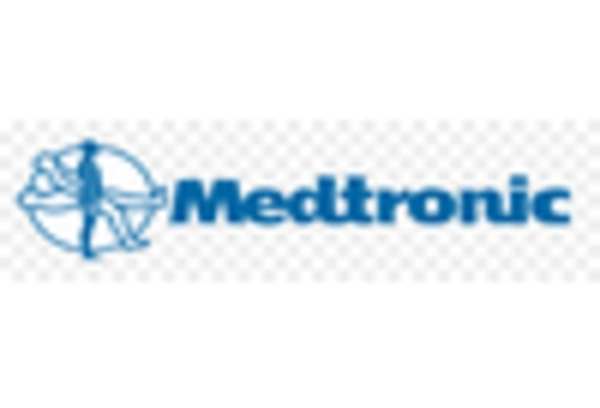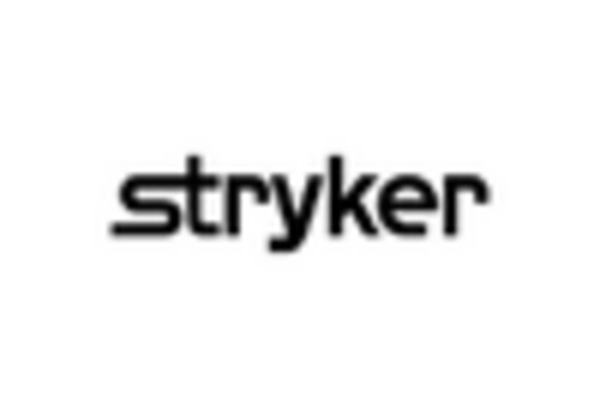Growing Healthcare Expenditure
China's increasing healthcare expenditure is a critical driver for the piriformis syndrome market. The government has been investing heavily in healthcare infrastructure and services, aiming to provide better access to medical care for its population. In 2025, healthcare spending is expected to reach approximately 7.5% of GDP, reflecting a commitment to improving health outcomes. This rise in expenditure facilitates the availability of advanced treatment options for conditions like piriformis syndrome. As more patients gain access to healthcare services, the demand for effective treatments is likely to surge, thereby expanding the market. Enhancing healthcare quality and accessibility is expected to create a conducive environment for the growth of the piriformis syndrome market..
Advancements in Medical Technology
Technological advancements in medical devices and treatment methodologies are significantly influencing the piriformis syndrome market. Innovations such as minimally invasive surgical techniques, advanced imaging modalities, and novel therapeutic devices are enhancing diagnosis and treatment efficacy. For instance, the introduction of ultrasound-guided injections has improved the accuracy of treatment delivery, leading to better patient outcomes. The market for medical devices in China was projected to grow at a CAGR of around 10% over the next few years., indicating a favorable environment for the development of solutions targeting piriformis syndrome. These advancements not only improve patient care but also stimulate market growth by attracting investments and encouraging research and development in the field.
Increased Focus on Pain Management
The growing emphasis on pain management strategies is driving the piriformis syndrome market in China.. Chronic pain conditions, including piriformis syndrome, are increasingly recognized as significant health issues that require comprehensive management approaches. The Chinese government has initiated various programs aimed at improving pain management services, which include the integration of pharmacological and non-pharmacological treatments. This shift towards a more holistic approach to pain management is likely to enhance the demand for therapies targeting piriformis syndrome. As healthcare providers adopt more patient-centered care models, the market for effective pain relief solutions is expected to expand, reflecting a broader trend in the healthcare landscape.
Rising Interest in Physical Therapy
Growing interest in physical therapy as a treatment for musculoskeletal disorders is influencing the piriformis syndrome market.. In China, there is an increasing recognition of the benefits of physical therapy in managing conditions like piriformis syndrome. This trend is supported by a rise in the number of trained physical therapists and rehabilitation centers across the country. As patients seek non-invasive treatment options, the demand for physical therapy services is likely to grow. Recent estimates suggest that the physical therapy market in China could reach $10 billion by 2026, indicating a robust environment for the development of therapeutic interventions for piriformis syndrome. This shift towards conservative management strategies may lead to increased market opportunities for practitioners and service providers.
Increasing Incidence of Piriformis Syndrome
The rising incidence of piriformis syndrome in China is a notable driver for the piriformis syndrome market. Factors such as sedentary lifestyles, increased participation in sports, and the aging population contribute to this trend. Recent studies indicate that approximately 6-8% of individuals with sciatica may have piriformis syndrome as the underlying cause. This growing prevalence necessitates enhanced diagnostic and therapeutic options, thereby expanding the market. As healthcare providers become more aware of this condition, the demand for targeted treatments is likely to increase, further propelling the market forward. The increasing number of patients seeking relief from symptoms associated with piriformis syndrome is expected to create a robust market environment, fostering innovation and investment in treatment solutions.

















Leave a Comment